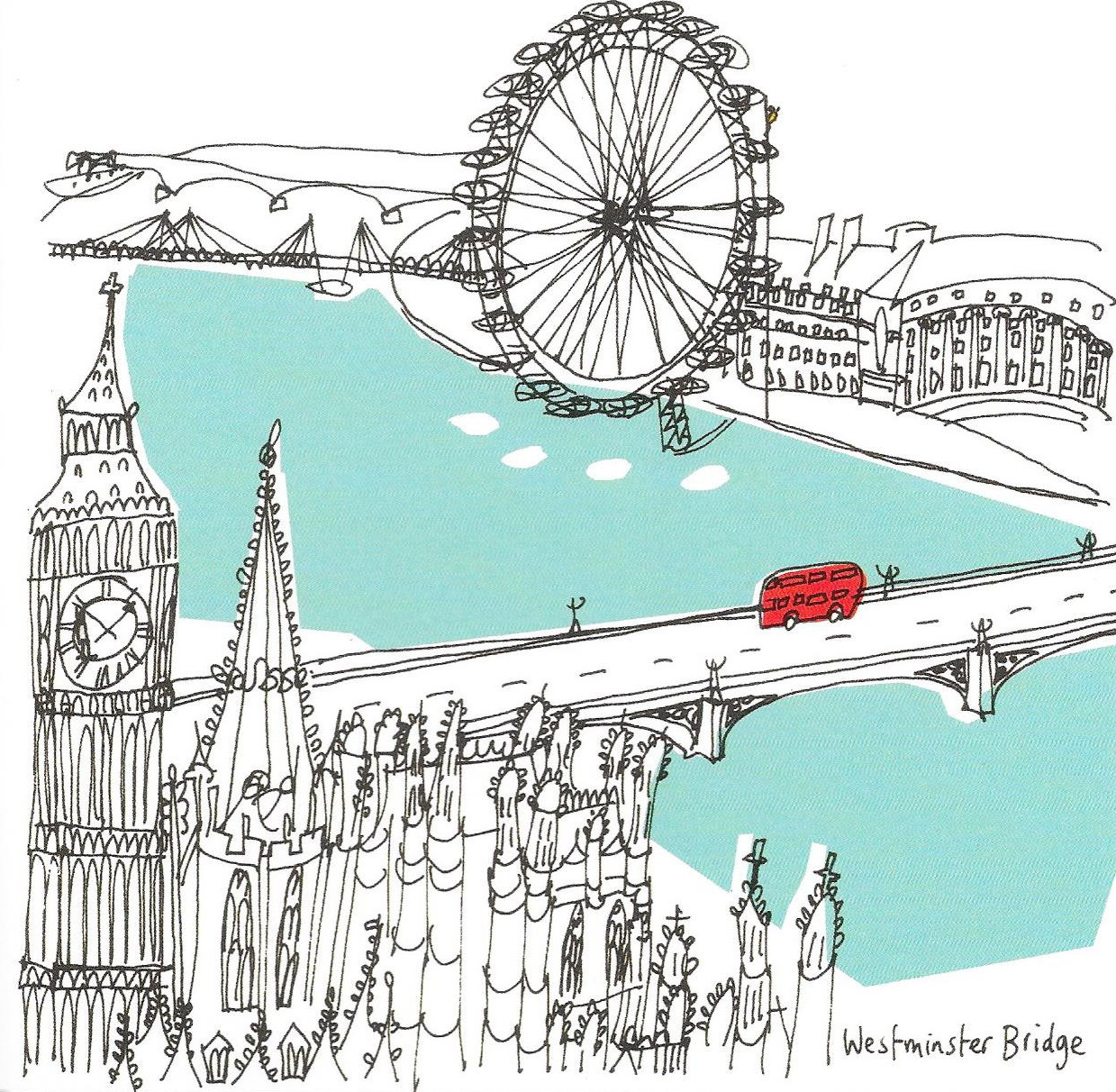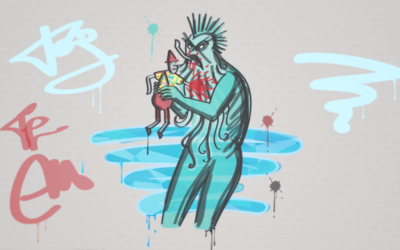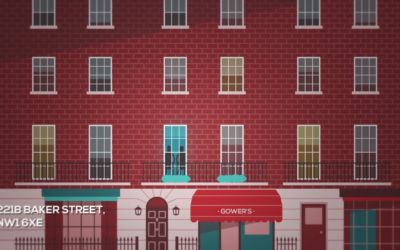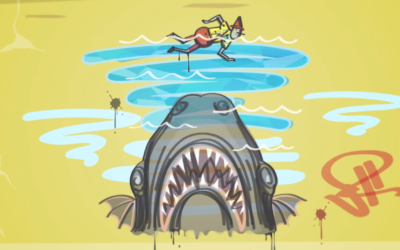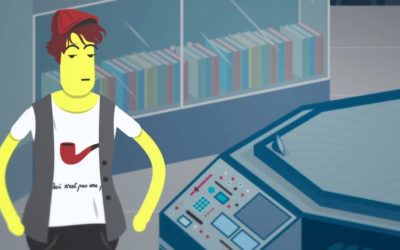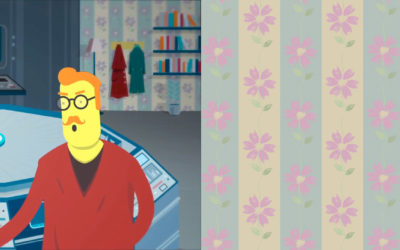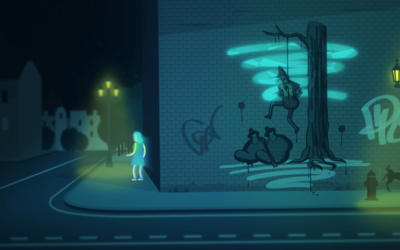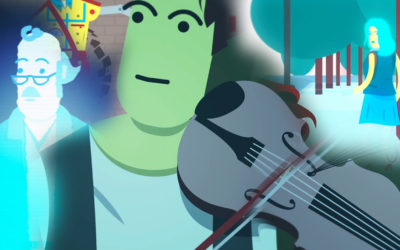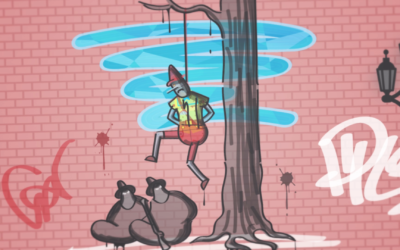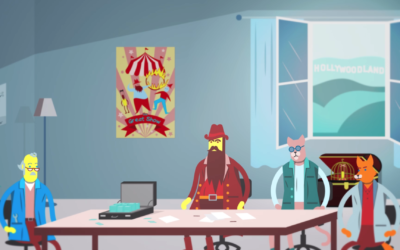1. THE RED BUS
The Adventure of the Girl with the Light Blue Hair starts with a red double-decker bus travelling across Westminster Bridge, with the Houses of Parliament in the background. The choice of starting the video with this particular image and colour scheme – a red bus on a black and white background – is intentional. It explicitly refers to a recent copyright case involving similar photographs: Temple Island Collections Ltd v New English Teas Ltd & another [2012] EWPCC 1.
In the digital age, copyright in photography is being challenged in many ways. On the one hand, it is extremely easy to copy a digital photograph and share it via social networks; on the other hand, it is often difficult or even impossible to identify the copyright owner of that photograph and get their permission to use it.
This Case File #1 briefly explores the delicate relationship between copyright and photography, and presents the Temple Island case to generate points of discussion around this topic.
COPYRIGHT AND PHOTOGRAPHY
Copyright protects different types of work, such as books, songs, films and images. In the UK photographs are protected by copyright as ‘artistic works’, a category that also includes paintings, illustrations and sculptures. In order to receive copyright protection, photographs need to be original. The artistic quality of the photo is not a requirement for copyright, so original amateur pictures are protected too. According to UK copyright law a photograph is considered original if it is created by the author using his own ‘skill, labour, effort and judgement’. Recent European case law indicates that originality arises from the author’s ‘own intellectual creation’. Either way, it has to be the author’s own creation and should not be copied from other protected works.
As soon as you take a photo that is original you become the copyright owner of that photograph. This is because copyright is granted automatically, with no need to register your work. You can find more information about copyright protection here.
It is important to know that copyright only protects the expression of an idea, not the idea itself (in legal terms: the idea-expression dichotomy). In other words copyright protection does not cover ideas, concepts or techniques, but only the expression of these.
For example, the idea of painting a flower in an impressionistic style is not protected, whereas the actual painting expressing that idea can be. Similarly, the idea of photographing a particular landscape cannot be protected by copyright; what is protected is the photograph itself. This means that if you take a photo of Westminster Bridge using your smart phone, automatically you have copyright in the image you produce; if anyone else wanted to use that particular photograph (e.g. on their Facebook page), they would need to get your permission first.
However, the idea of photographing Westminster Bridge cannot be protected. In fact, the defendants in the Temple Island Collections Ltd case argued that Westminster Bridge, the Houses of Parliament and the iconic London Routemaster bus were ‘common elements’ in the claimant’s photograph which could not be protected (see the discussion below). Anyone else, they argued, remained free to create a photograph incorporating the same objects.
Ideas and works that are not original enough to receive copyright protection are in the public domain, meaning that anyone can freely use them. What makes a work original and thus copyright protected is the creative input of the author. In the case of photography, originality can be achieved in several ways, for example, by: i) choosing a special angle of shot, setting up the camera in a particular way, editing the photo afterwards and so on; ii) creating a scene to be photographed; iii) being in the right place at the right time.
CURIOSITY
Recently there was a lot of online discussion and debate about whether or not copyright existed in a photograph taken by a monkey: the infamous monkey ‘selfie’. You can read about this curious case here.
The Case: Temple Island Collections Ltd v New English Teas Ltd & another [2012] EWPCC 1
The photo on the left was taken in 2005 by Mr Fielder, who wanted to create a modern and iconic scene of London to be used on souvenirs. Using Photoshop and taking inspiration from the film Schindler’s List, Mr Fielder edited the photo to make the red bus stand against a black and white background. He also removed the sky and some people from the picture. In 2010 Mr Houghton, who was aware of the existence of Mr Fielder’s picture, took three photos of the Houses of Parliament and one of a red Routemaster bus. These photos were edited together with another iStockphoto image of a red Routemaster bus to create the picture on the right, which was used on souvenir tins for tea.
Mr Fielder claimed that Mr Houghton’s work reproduced a substantial part of his original work and so infringed his copyright. Mr Houghton contested that in terms of copyright protection his picture was sufficiently different from Mr Fielder’s work, which was so ordinary that copyright could be infringed only by copying it exactly, for example by making a photocopy. According to Mr Houghton, Mr Fielder could not rely on copyright law to establish a monopoly on black and white images of the Houses of Parliament with a red bus in frame. Mr Houghton argued that these elements are ‘common elements’ in every day life, which cannot be copyright protected.
Justice Birss gave judgement in favour of Mr Fielder: he found that Mr Houghton copied a substantial part of Mr Fielder’s picture and thus infringed his copyright. The judge held that there were obvious similarities between the two images – such as the same buildings in black and white with a bright red bus driving from right to left and the blank white sky – and that these similarities were due to the fact that Mr Houghton saw Mr Fielder’s work before creating his own image, had copied it, and had copied too much of it.
FOR DISCUSSION: COPYRIGHT INFRINGEMENT OR JUST COMMON ELEMENTS?
What do you think? Was the judge right to decide that Mr Houghton’s work infringed Mr Fielder’s copyright? Or should Mr Houghton have been free to produce that image without Mr Fielder’s permission, according to the idea-expression dichotomy explained above?
Or what about this drawing created in 2011 by the artist Susie Brooks? It is, essentially, a black and white image of Westminster Bridge that also features a red Routemaster bus and the Houses of Parliament. If the artist was aware of Mr Fielder’s photograph when she created her work, do you think her drawing might infringe copyright?
In fact, Susie Brooks had never seen Mr Fielder’s photograph. She wrote to Copyright User about the creation of her work as follows: ‘[This artwork] was part of a series of drawings of a person crossing London and featuring Thames crossings from East to West. … As I print in silkscreen, which is laborious, the medium dictates that I use as few colours as possible to say what I had to say … In this case I only wanted to draw attention to the bus, as this is where my fictional traveller is sitting, and also tells the viewer it is London in shorthand.’
The artist’s comment that she used a red bus as a ‘shorthand’ way of communicating that this is London is interesting, especially in light of the kind of arguments presented to the judge in the Temple Island case.
You can find out more about Susie Brooks and the artwork she creates here.
USEFUL REFERENCES:
Temple Island Collections Ltd v New English Teas Ltd & another [2012] EWPCC 1 is available here: http://www.bailii.org/ew/cases/EWPCC/2012/1.html
The government have produced some advice for individuals or businesses who want to make use of photographs and other images online. You can read this guidance here: https://www.gov.uk/government/publications/copyright-notice-digital-images-photographs-and-the-internet
Download the PDF version of Case File #1 – The Red Bus.
More Case Files
2. The Monster
One of the graffiti that scare the toymaker Joseph portrays a monster eating his ‘beautiful, wonderful toy’. The image of the monster is inspired by two different artistic works
3. The Baker Street Building
Sherlock Holmes and John Watson discuss Joseph’s case at 221B Baker Street. The above illustration is inspired by two sources…
4. The Anonymous Artist
Joseph, the toymaker, has asked the police to identify the culprit making ‘dreadful images’ of his toy, portraying it in violent situations.
5. The Terrible Shark
This illustration from our video depicts a terrible shark-like creature about to eat Joseph’s toy. It was inspired by two different images…
6. The Famous Pipe
The pipe has been associated with the image of Sherlock Holmes since Sir Arthur Conan Doyle’s (1859 – 1930) stories were first published in The Strand Magazine with illustrations by Sidney Paget (1860 – 1908).
7. The Matching Wallpaper
In the background of Holmes and Watson’s apartment you can see wallpaper with ‘flowers scattered over it in a somewhat impressionistic style’.
8. The Dreadful Images
The ‘dreadful images’ that scare Joseph, the toymaker, are graffiti drawn all over the ‘fictional land called London’. The illustration above, depicting Joseph’s toy hung from a tree, is based on an actual place in London.
9. The Improbable Threat
In trying to persuade Holmes to take Joseph’s case, Watson asks: ‘What if it’s a threat? That’s what the graffiti might mean.’ These eleven words are based on dialogue from The Blind Banker…
10. The Uncertain Motivation
Joseph, Sherlock Holmes and the Girl with the Light Blue Hair are all creators: Joseph draws and designs toys; Sherlock composes music; and the mysterious girl is an accomplished street artist.
11. The Mutilated Work
In trying to persuade Holmes to take the case, Watson argues that: ‘If you were a professional musician, you wouldn’t want people copying or mutilating your work’.
12. The Hollywoodland Deal
Joseph explains to Holmes and Watson when and why the dreadful images of his beautiful, wonderful toy began to appear all over London. When ‘some guys’ from Hollywoodland approached him ‘to option a movie’…


